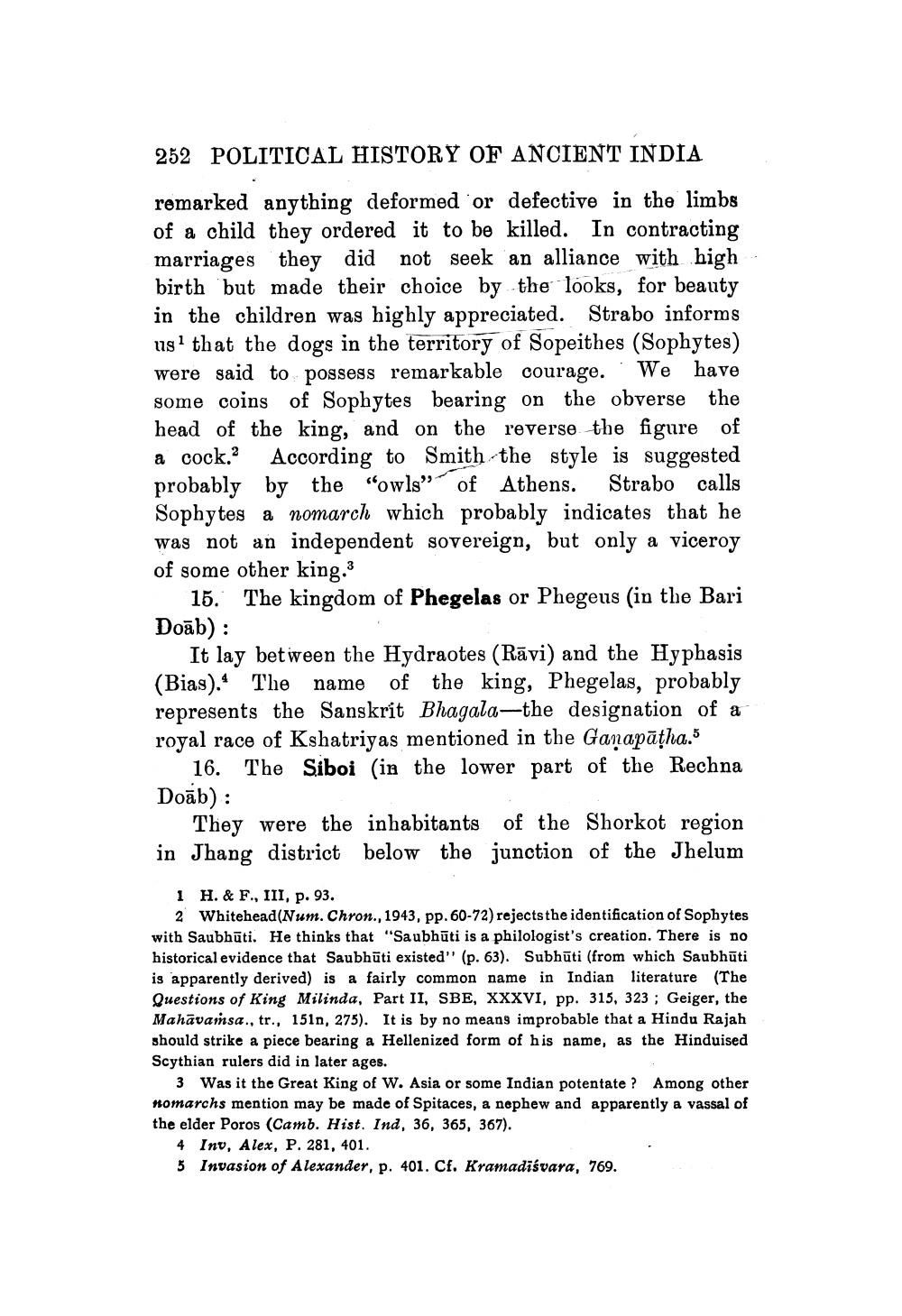________________
252 POLITICAL HISTORY OF ANCIENT INDIA remarked anything deformed or defective in the limbs of a child they ordered it to be killed. In contracting marriages they did not seek an alliance with high birth 'but made their choice by the looks, for beauty in the children was highly appreciated. Strabo informs us that the dogs in the territory of Sopeithes (Sophytes) were said to possess remarkable courage.. We have some coins of Sophytes bearing on the obverse the head of the king, and on the reverse the figure of a cock. According to Smith the style is suggested probably by the "owls” of Athens. Strabo calls Sophytes a nomarch which probably indicates that he was not an independent sovereign, but only a viceroy of some other king.
15. The kingdom of Phegelas or Phegeus (in the Bari Doāb):
It lay between the Hydraotes (Rāvi) and the Hyphasis (Bias). The name of the king, Phegelas, probably represents the Sanskrit Bhagala–the designation of a royal race of Kshatriyas mentioned in the Ganapātha.5
16. The Siboi (in the lower part of the Rechna Doāb) :
They were the inhabitants of the Shorkot region in Jhang district below the junction of the Jhelum
1 H. & F., III, p. 93.
2 Whitehead(Num. Chron., 1943, pp. 60-72) rejects the identification of Sophytes with Saubhūti. He thinks that "Saubhūti is a philologist's creation. There is no historical evidence that Saubhūti existed" (p. 63). Subhūti (from which Saubhūti is apparently derived) is a fairly common name in Indian literature (The Questions of King Milinda, Part II, SBE, XXXVI, pp. 315, 323; Geiger, the Mahāvamsa., tr., 151n, 275). It is by no means improbable that a Hindu Rajah should strike a piece bearing a Hellenized form of his name, as the Hinduised Scythian rulers did in later ages.
3 Was it the Great King of W. Asia or some Indian potentate? Among other nomarchs mention may be made of Spitaces, a nephew and apparently a vassal of the elder Poros (Camb. Hist. Ind, 36, 365, 367).
4 Inv, Alex, P. 281, 401. 5 Invasion of Alexander, p. 401. Cf. Kramadiśvara, 769.




